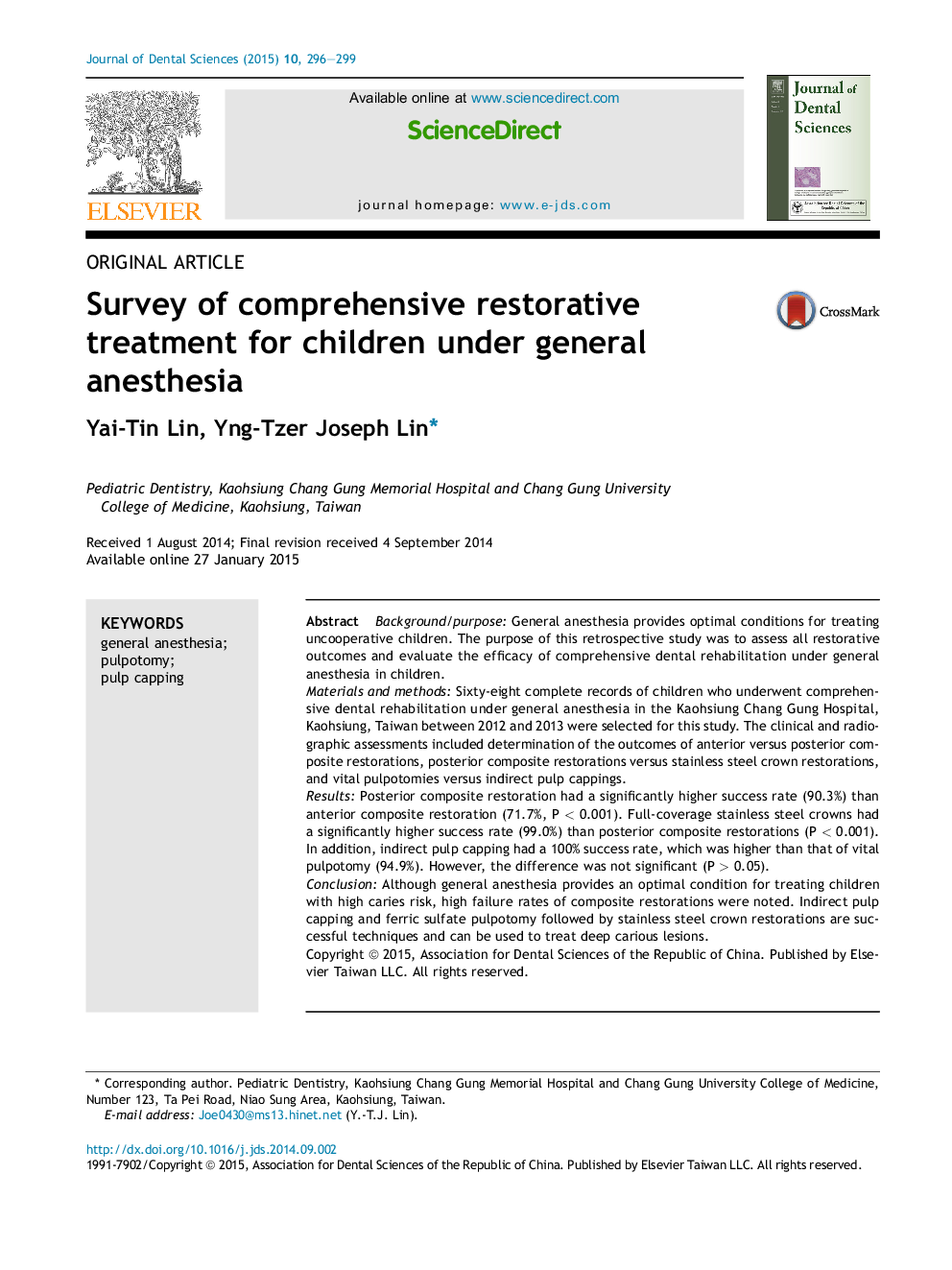| Article ID | Journal | Published Year | Pages | File Type |
|---|---|---|---|---|
| 3144647 | Journal of Dental Sciences | 2015 | 4 Pages |
Background/purposeGeneral anesthesia provides optimal conditions for treating uncooperative children. The purpose of this retrospective study was to assess all restorative outcomes and evaluate the efficacy of comprehensive dental rehabilitation under general anesthesia in children.Materials and methodsSixty-eight complete records of children who underwent comprehensive dental rehabilitation under general anesthesia in the Kaohsiung Chang Gung Hospital, Kaohsiung, Taiwan between 2012 and 2013 were selected for this study. The clinical and radiographic assessments included determination of the outcomes of anterior versus posterior composite restorations, posterior composite restorations versus stainless steel crown restorations, and vital pulpotomies versus indirect pulp cappings.ResultsPosterior composite restoration had a significantly higher success rate (90.3%) than anterior composite restoration (71.7%, P < 0.001). Full-coverage stainless steel crowns had a significantly higher success rate (99.0%) than posterior composite restorations (P < 0.001). In addition, indirect pulp capping had a 100% success rate, which was higher than that of vital pulpotomy (94.9%). However, the difference was not significant (P > 0.05).ConclusionAlthough general anesthesia provides an optimal condition for treating children with high caries risk, high failure rates of composite restorations were noted. Indirect pulp capping and ferric sulfate pulpotomy followed by stainless steel crown restorations are successful techniques and can be used to treat deep carious lesions.
